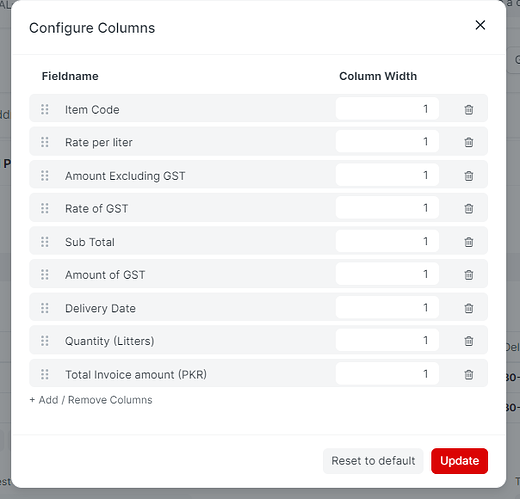There is limitation imposed by paper / screen width. So constrained imposed by Frappe is justified.
I like the down-to-earth (“screen real estate”) pragmatism of your reply, but it also got me thinking: How justified is anything in a world where we are co-creators, and especially in a technical realm where almost anything can be created? Thus I think it’s more a question of if it makes sense and if the concerned people freely agree. So:
The division of the available space could be different. Who decides? Or what decides (like: processes, requirements, work efficiency)?
If the column names were put vertically instead of horizontally, it might be possible to stuff more columns into the available width.
Also, you could get a bigger screen, or put two screens next to each other and extend the window over both of them.
And/or one could also use different zoom factors. Or use colors instead of column names to know which column means what.
So, after all, I suggest that the answer is not that clear-cut and immediate, but that all depends on the context and the means available to put into an appropriate adaptation.
Anyway, frappe framework allows many different kinds of customization. There could be a custom template for the required document which formats the screen es needed.
And the source is open, for anyone to hack as them pleases.
Yeah, but you will face difficulty to add more row
Sure, I suppose that’s why some programmer invented the scroll bar.
And if you stack monitors on top of each other, you might want a ladder at some point.
So, sure, some effort and inventivity could help, the ladder also can provide some health(y) balancing physical exercise for the screen reading person, and in the end we’ll all agree that there are limitations, as was already suggested before.
So there is room for adaptation, sometimes more than might be apparent at first, but even then it’s still … limited and then we need to find a solution in another direction. It’s a healthy inner exercise in a way.
